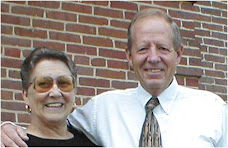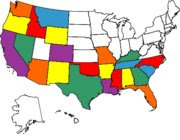Weather: low 29 degrees, high 58 degrees, clear skies, light breezes
The weather was so nice today that we decided to go down to the west entrance of Big Bend National Park and tour the parts of the park we had not seen yet. So, getting an early start, we were on the road by 0900 hours. It may not seem early to some folks, but believe me, since I'm not working, that's an early start for us.
The west entrance to the park is about 80 miles from Alpine, but the road goes through some beautiful countryside with few people living there. That meant very little traffic.
After about 60 minutes of driving time, we started seeing scattered places where people were living. RVs, mobile homes, small houses, and other types of buildings being used for people to live in. Many of them appeared to be vacant. We've wondered what brings people here to live in a place that is so far from the conveniences that most of us take for granted, and to us the attraction is the weather in the winter and the natural beauty of the area. We think that everything probably changes in the summer, when the heat is probably oppressive.
Before getting to the park entrance, we drove through the small towns of Study Butte and Terlingua. Put an emphasis on small. Not much there at all, even though there appears to be a new school.



 Since we had seen much of the eastern part of the park last week, our emphasis on this visit was to go to the Castelon Visitor Center, located a short distance from the Rio Grande River and the US/Mexico border. Obviously, we took this picture from the US side. There's not much there to stop illegal aliens from crossing the river, with most places we saw shallow enough to wade across.
Since we had seen much of the eastern part of the park last week, our emphasis on this visit was to go to the Castelon Visitor Center, located a short distance from the Rio Grande River and the US/Mexico border. Obviously, we took this picture from the US side. There's not much there to stop illegal aliens from crossing the river, with most places we saw shallow enough to wade across.That's footprints on the other side of the river.
The Castolon Visitor's Center was first used by the US Army to patrol and protect the area from bandits until about 1920, when conditions in Mexico stabilized. People from the two countries moved back and forth across the border with little or no interference until the events of 9/11 caused the US to close the border. As a result, the little Mexican town across the river has almost died.
The next stop after Castolon was at the Santa Elana Canyon overlook. The canyon was created by the Rio Grande River over the course of millions of years.
By the time we reached the overlook, it was starting to get late enough that we began to make plans to head home. The big question was which way to go: backtrack the same way we came, or take Old Maverick Road, a gravel road that would help us complete a circle in the park. Carolyn was feeling adventurous today, so she voted for taking the gravel road because it would be about 15 miles shorter in distance. Well, now. Shorter in distance doesn't necessarily mean shorter in time. The gravel road was 14 miles long, and it took us about two hours to drive it because it was so rough. I'm still looking for a filling from one of my teeth. The picture truly does not do justice to how rough the road was.
Eventually, we made it off the graded road and back to civilization in Study Butte. Then it was back home, with a short stop at a Border Patrol checkpoint so they could make sure we were US citizens and weren't carrying any contraband.
There's more to today's adventure, but I'm wore out. I'll finish this adventure tomorrow.
More later, be safe.
Today's Town - Terlingua, Texas: Chili Capital Of Texas
Not all who wander are lost.




2 comments:
Those "footprints" you pictured on the other side of the river are actually hoof prints. There are wild horses living all along the border area in Big Bend country, as well as numerous cows, most free-grazing but probably owned by the few Mexicans living along this border. Visitors who take float trips on the river often see horses and cattle as they make their way through the beautiful canyons.
Thanks for the info. We would like to go into the canyon on a retrun trip.
Jerald
Post a Comment